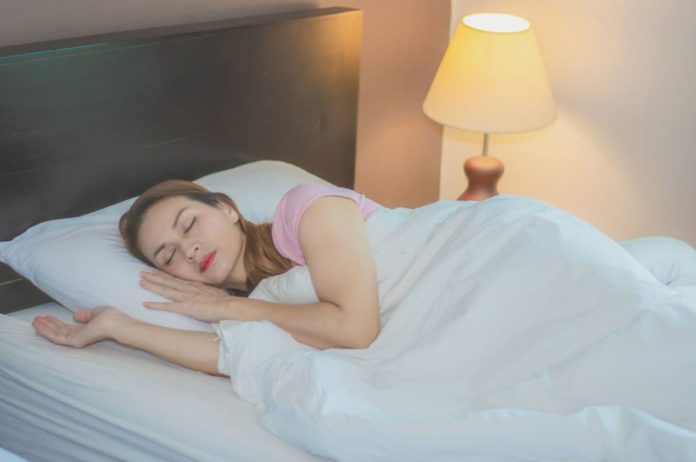Even mild light exposure while sleeping is bad for your heart and raises your insulin resistance.
Close the blinds when sleeping to protect yourself from diabetes, heart disease. Even modest ambient brightness during sleep, compared to sleeping in a poorly lit room, impairs cardiovascular performance and raises insulin resistance the next morning, according to a new Northwestern Medicine study.
“Just a single night of exposure to moderate room lighting during sleep can impair glucose and cardiovascular regulation, which are risk factors for heart disease, diabetes and metabolic syndrome,” says senior study author Dr. Phyllis Zee. “It’s important for people to avoid or minimize the amount of light exposure during sleep.”
There is already evidence that daytime light exposure raises heart rate by activating the sympathetic nervous system, which sends your heart into high gear and heightens awareness to tackle the difficulties of the day.
“Our results indicate that a similar effect is also present when exposure to light occurs during nighttime sleep,” Zee adds.
Light rooms raise heart rate and prevent proper sleep
“Even though you are asleep, your autonomic nervous system is activated. That’s bad. Usually, your heart rate together with other cardiovascular parameters are lower at night and higher during the day,” according to Dr. Daniela Grimaldi, a co-first author.
During the day and night, the sympathetic and parasympathetic nerve systems govern our physiology. The sympathetic nervous system is in command during the day, while the parasympathetic nervous system is in charge at night, when it is supposed to restore the entire body.
What role does nighttime light play in diabetes and obesity?
The researchers discovered that people developed insulin resistance the morning after sleeping in a bright environment. Insulin resistance occurs when cells in your muscles, fat, and liver do not respond to insulin and are unable to utilize glucose from your blood for energy. Your pancreas produces extra insulin to compensate. Your blood sugar level rises with time.
A previous study in JAMA Internal Medicine looked at a large group of healthy persons who were exposed to light while sleeping. According to Zee, they were more overweight and obese.
“Now we are showing a mechanism that might be fundamental to explain why this happens,” Zee adds. “We show it’s affecting your ability to regulate glucose.”
The study’s participants were unaware of the physiologic changes that occurred in their bodies during the night.
“But the brain senses it,” Grimaldi explains. “It acts like the brain of somebody whose sleep is light and fragmented. The sleep physiology is not resting the way it’s supposed to.”
Artificial light exposure during the night, whether from indoor light-generating equipment or from sources outside the home, is common, especially in big urban areas. A large percentage of people (up to 40%) sleep with a bedside lamp or a light on in the bedroom, and/or keep the television on.
“In addition to sleep, nutrition and exercise, light exposure during the daytime is an important factor for health, but during the night we show that even modest intensity of light can impair measures of heart and endocrine health,” says Zee.
Over the course of a single night, the researchers evaluated the effects of sleeping with 100 lux (moderate light) against 3 lux (dim light) on individuals. Moderate light exposure caused the body to become more awake, according to the researchers. The heart rate, as well as the force with which the heart contracts and the rate at which blood is transported to your blood arteries for oxygenated blood flow, increases in this state.
Zee’s top tips for reducing light during sleep
(1) Don’t turn lights on. If you need to have a light on (which older adults may want for safety), make it a dim light that is closer to the floor.
(2) Color is important. Amber or a red/orange light is less stimulating for the brain. Don’t use white or blue light and keep it far away from the sleeping person.
(3) Blackout shades or eye masks are good if you can’t control the outdoor light. Move your bed so the outdoor light isn’t shining on your face.
Is my room too light?
“If you’re able to see things really well, it’s probably too light,” says Zee.
Image Credit: Getty
You were reading: Heart rate increases even when you sleep in a tiny lit room – scientists
